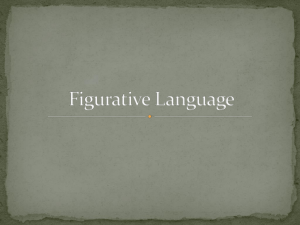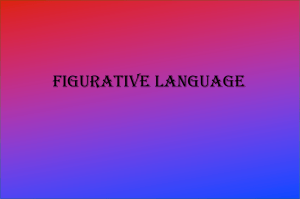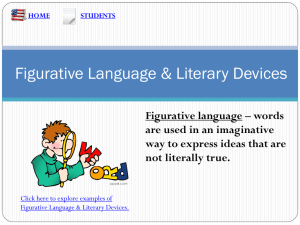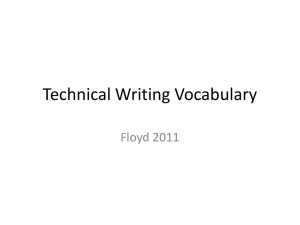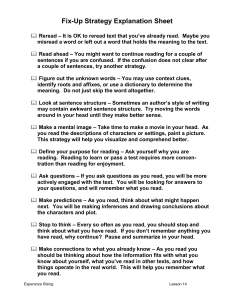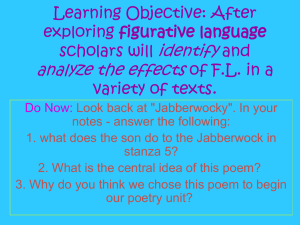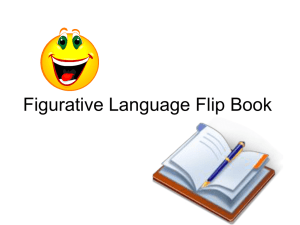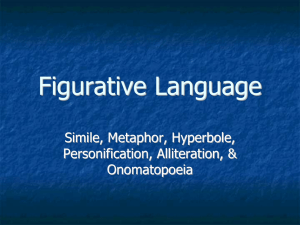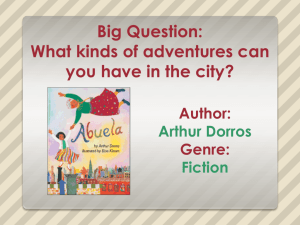Abuela`s
advertisement
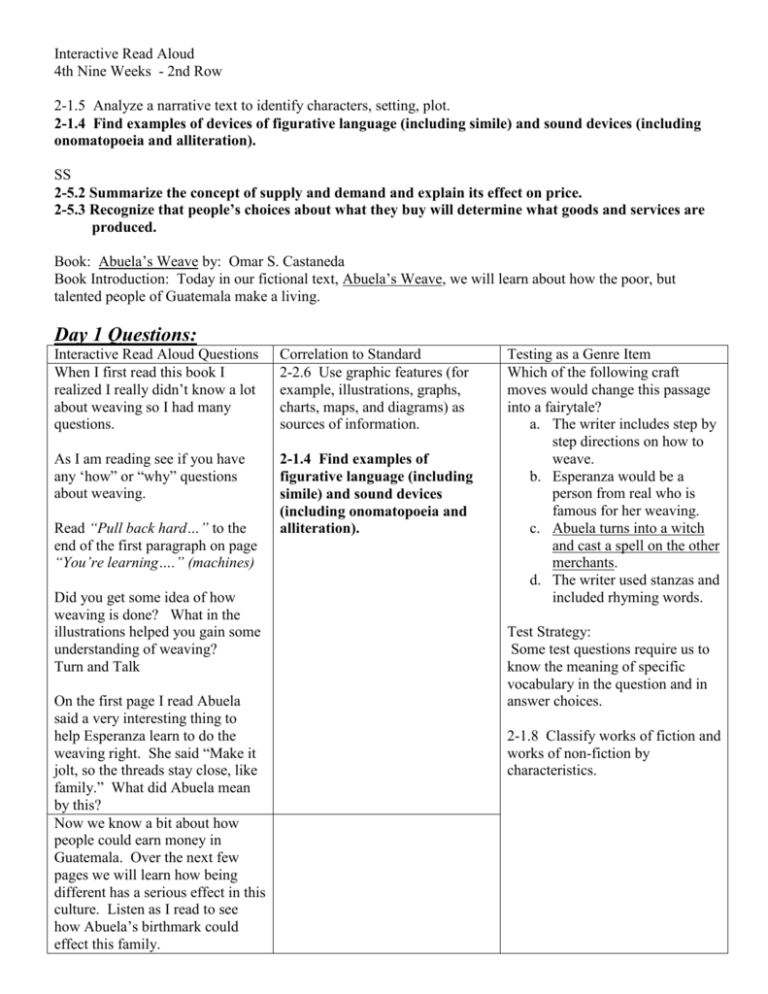
Interactive Read Aloud 4th Nine Weeks - 2nd Row 2-1.5 Analyze a narrative text to identify characters, setting, plot. 2-1.4 Find examples of devices of figurative language (including simile) and sound devices (including onomatopoeia and alliteration). SS 2-5.2 Summarize the concept of supply and demand and explain its effect on price. 2-5.3 Recognize that people’s choices about what they buy will determine what goods and services are produced. Book: Abuela’s Weave by: Omar S. Castaneda Book Introduction: Today in our fictional text, Abuela’s Weave, we will learn about how the poor, but talented people of Guatemala make a living. Day 1 Questions: Interactive Read Aloud Questions When I first read this book I realized I really didn’t know a lot about weaving so I had many questions. Correlation to Standard 2-2.6 Use graphic features (for example, illustrations, graphs, charts, maps, and diagrams) as sources of information. As I am reading see if you have any ‘how” or “why” questions about weaving. 2-1.4 Find examples of figurative language (including simile) and sound devices (including onomatopoeia and alliteration). Read “Pull back hard…” to the end of the first paragraph on page “You’re learning….” (machines) Did you get some idea of how weaving is done? What in the illustrations helped you gain some understanding of weaving? Turn and Talk On the first page I read Abuela said a very interesting thing to help Esperanza learn to do the weaving right. She said “Make it jolt, so the threads stay close, like family.” What did Abuela mean by this? Now we know a bit about how people could earn money in Guatemala. Over the next few pages we will learn how being different has a serious effect in this culture. Listen as I read to see how Abuela’s birthmark could effect this family. Testing as a Genre Item Which of the following craft moves would change this passage into a fairytale? a. The writer includes step by step directions on how to weave. b. Esperanza would be a person from real who is famous for her weaving. c. Abuela turns into a witch and cast a spell on the other merchants. d. The writer used stanzas and included rhyming words. Test Strategy: Some test questions require us to know the meaning of specific vocabulary in the question and in answer choices. 2-1.8 Classify works of fiction and works of non-fiction by characteristics. Read last paragraph on page “You’re learning…” to the end of “Inside, they sat three…” 2-1.9 Explain cause and effect relationships in literary texts. What causes us to realize how serious the birthmark was for the family? 2-1.4 Find examples of figurative language (including simile) and sound devices (including onomatopoeia and alliteration). The writer made an interesting comparison to really call attention to the fact of how serious grandma took this idea of not being seen with Esperanza. Reread last page “Inside, they sat…” How does the comparison make this passage stronger than simply telling us they sat three seats apart? Read “When they arrived…” to the end of “She walked furiously…” 2-2.2 Analyze texts to draw conclusions and make inferences during classroom discussions. Who do you think is the most worried? Give reasons for your thinking. Day 2 Questions: Interactive Read Aloud Questions Before we finish our story today I want us to think about something Omar Castaneda did to make the reader feel they are a part of the story. He describes a lot of sounds to give us a picture of how busy and confusing this was for Esperanza. After I reread I will ask you to make some of the sounds he described with words Reread page “When they arrived…” Discuss Then the teacher will write down several of these sound words (Example – “eeeek” for the screeching brakes, “beep beep” for horns, “tweet tweet” for policeman whistle, etc.) Sometimes writers not only write about the sounds as Correlation to Standard 2-1.4 Find examples of figurative language (including simile) and sound devices (including onomatopoeia and alliteration). Testing as a Genre Item Read this sentence from the passage. The tapestry’s color shone as brightly as the sun over the lake. Which type of figurative language is used in this sentence? a. simile b. onomatopoeia c. alliteration d. sound words Test Strategy: You must know certain definitions and be able to Castaneda did, they also make up words for the actual sound, which is called “onomatopoeia.” Read “The stalls were already filled…” to the end of “Esperanza sadly took…” 2-1.5 Analyze a narrative text to identify characters, setting, and plot. Several weeks ago we read Grandpa’s Store where Grandpa had similar worries as Esperanza. Turn and Talk about how these two characters are alike. Be sure to provide examples. (Pull Grandpa’s Store back out and refer to pages you feel will help students with character comparison.) Read “The people slowly 2-2.2 Analyze texts to draw noticed…” to the end of the book. conclusions and make inferences during classroom discussions. How was the trip back home different from the trip to the market? (Help students get at thoughts and feelings as well as physical closeness.) Why did the writer choose to compare/contrast their hands instead of their facial features? Reread page “People turned from…” (2nd from the last page) 2-5.2 Summarize the concept of supply and demand and explain its effect on price. I want us to think about what we are studying in social studies and how it might go with this page. Listen as I reread a small part “It didn’t take long for all of their work to be sold that day. The people were disappointed when all was gone.” Do you think Esperanza could have sold the last few items for more money? Why or why not? Turn and Talk Listen now to this part “The people were disappointed when all was gone, but Esperanza promised to return with new things the following month.” How might Esperanza decide on what to make and charge next month? 2-5.3 Recognize that people’s choices about what they buy will determine what goods and services are produced. match them to examples or use what you do know to eliminate some answer choices. This increases your chances of choosing the correct answer. 2-1.4 Find examples of figurative language (including simile) and sound devices (including onomatopoeia and alliteration). Discuss
